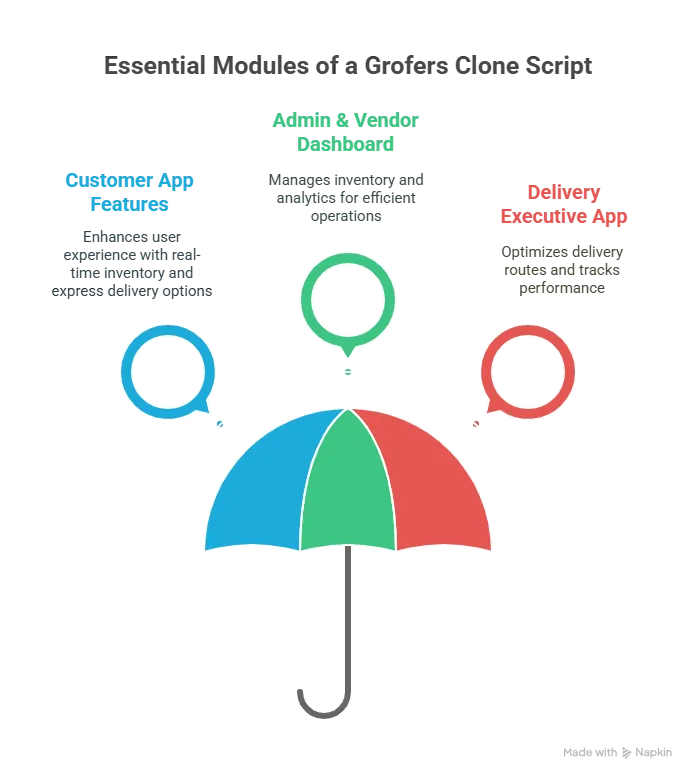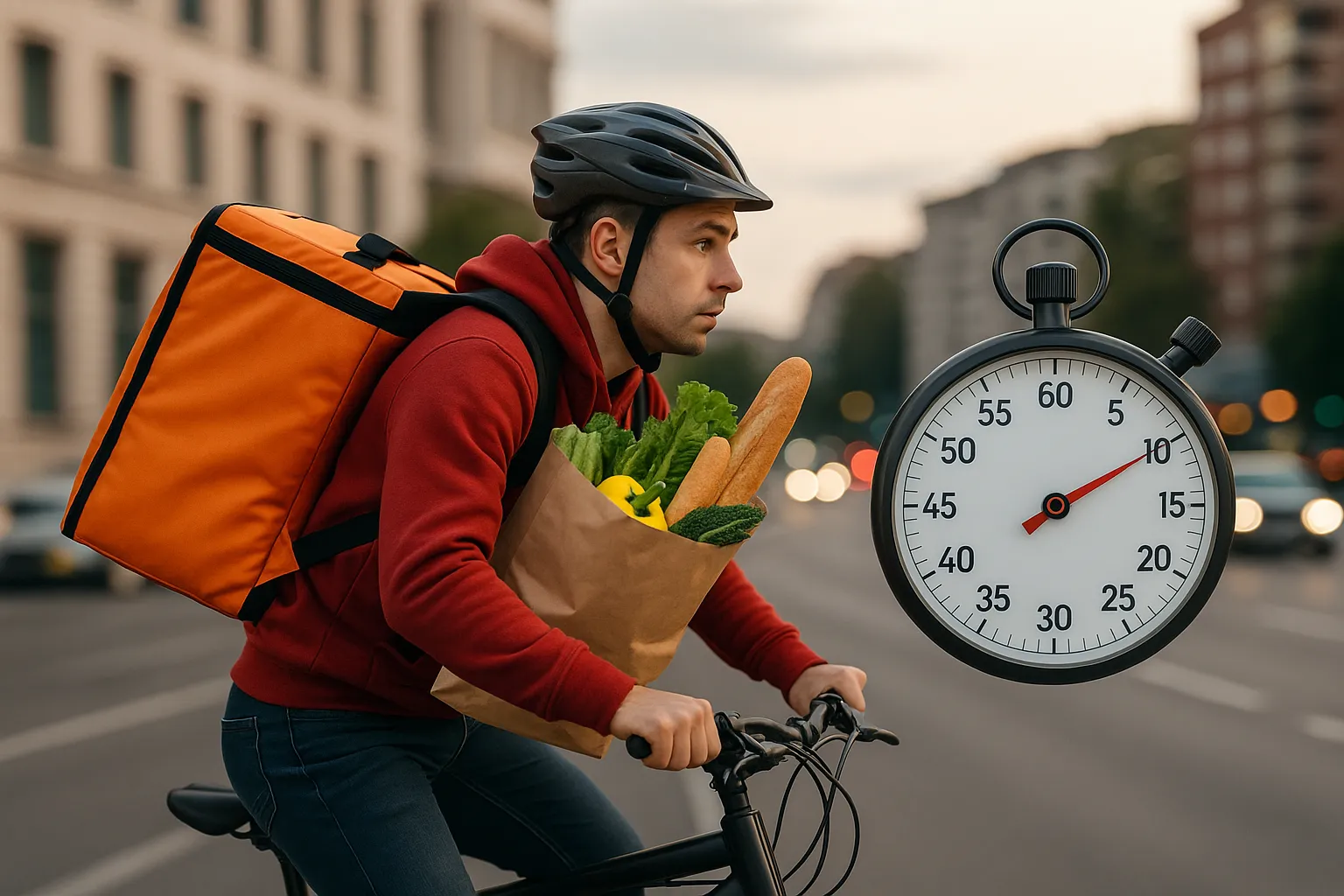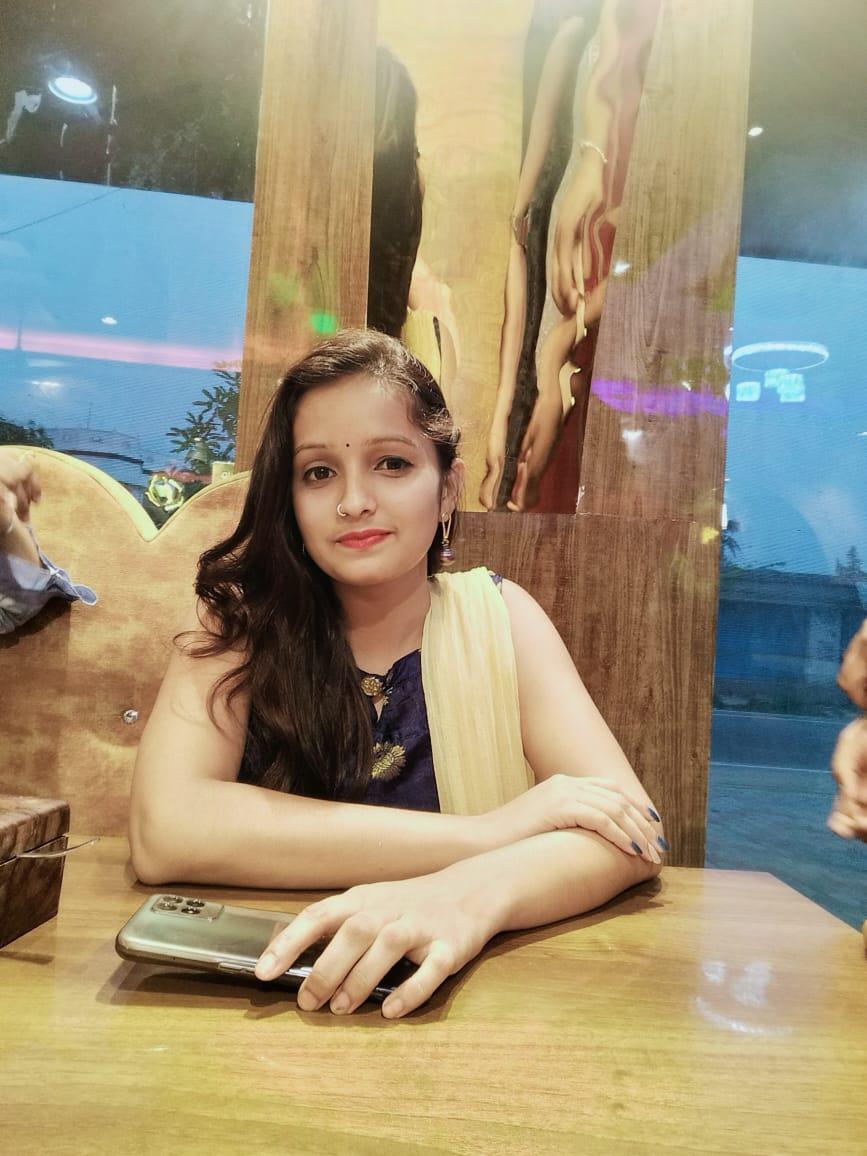Just a few years ago, waiting two hours for grocery delivery felt like magic. Today, users expect their detergent, eggs, and noodles to arrive in the time it takes to make a cup of tea. Welcome to the age of quick commerce, where companies like Grofers—now Blinkit—redefined the rules of grocery delivery by compressing the entire supply chain into 10-minute promises.
This shift didn’t happen overnight. It came with years of infrastructure evolution, the rise of dark stores, and a change in consumer psychology. People no longer plan grocery lists. They order what they need, when they need it. For startups and entrepreneurs, this is a powerful cue: the time to build ultra-fast grocery delivery platforms is now.
With Grofers clone scripts becoming more advanced and accessible, launching your own quick commerce business in 2025 is no longer a pipe dream. It’s a realistic path to capturing hyperlocal markets—if you have the right tech and strategy.
Why Quick Commerce Still Thrives in 2025
Quick commerce didn’t burn out—it just got smarter. While some big players struggled to sustain hyper-speed logistics, others optimized inventory, streamlined delivery networks, and focused on data-driven stocking.
The demand didn’t disappear. Urban customers, students, busy professionals, and even small offices continue to prefer apps that deliver essentials in under 15 minutes. For areas underserved by Blinkit, Instamart, or Zepto, this opens doors for local players with better unit economics and smarter zone targeting.
The rise of grocery micro-hubs and dark stores has also made it easier for entrepreneurs to build localized versions of Blinkit using Grofers clone scripts that handle everything from inventory syncing to dispatch routing.
Read More : What is Grofers App and How Does It Work?
Key Features of a Grofers Clone Scripts

To meet the expectations of speed and accuracy, Grofers clone scripts must go beyond regular grocery app functionality. Here are the critical modules:
Customer App Features
- Real-time inventory with only available items displayed
- Express delivery option with ETA countdown
- One-click reorders and favorites
- Location-based product visibility
- In-app chat and issue reporting
- Offers and referral programs
Admin & Vendor Dashboard
- Product, category, and inventory management
- Location tagging and stock allocation by delivery zone
- Multi-warehouse or dark store control
- Real-time analytics (orders, revenue, delivery success rates)
- Customer management and support tracking
Delivery Executive App
- Assigned delivery with optimized routing
- Delivery time commitment tracking
- Proof of delivery (photo, OTP)
- Incentive module and earnings overview
- Return or issue logging system
These three modules ensure the system operates at scale, without bottlenecks in fulfillment, user experience, or reporting.
Advanced Features Emerging in 2025
With the quick commerce ecosystem becoming more competitive, clone providers are now offering advanced tools out of the box:
- AI-based demand forecasting for each hub or warehouse
- Order batching and auto-assign logic for last-mile delivery
- Predictive route optimization to avoid traffic delays
- Smart inventory depletion alerts for restocking
- Dynamic pricing or surge delivery fees
- Multi-lingual and voice search capabilities
The best clone scripts also include integrations for warehouse management systems (WMS), automated procurement from suppliers, and delivery partner aggregators
Read More : Reasons startup choose our Grofers clone over custom development
Cost Factors & Pricing Breakdown
Grofers-Style Online Grocery Delivery Platform — Market Price
| Development Level | Inclusions | Estimated Market Price (USD) |
|---|---|---|
| 1. Basic Grofers-Style MVP | Single-city grocery ordering site/app with login, category-wise catalog, search & filters, product detail pages, cart, checkout, simple delivery slots, and basic admin for products & orders. | $50,000 |
| 2. Full-Feature Grofers-Like Platform | Multi-warehouse catalog, advanced filters, coupons, multiple payment methods, scheduled & express delivery, promo banners, notifications, and analytics for orders, customers, and products. | $120,000 |
| 3. Enterprise-Grade Grocery Delivery Ecosystem | Multi-city zones, picker/driver modules, route & batch optimization, subscriptions/recurring orders, loyalty programs, ERP/POS integrations, marketing tools, and scalable cloud infrastructure. | $240,000+ |
These prices reflect the typical global custom development cost of building a Grofers-style on-demand grocery marketplace from scratch — including catalog, inventory, delivery flows, payments, security, and infrastructure.
Miracuves Pricing for a Grofers-Like Platform
Miracuves Price: $2,899
The Grofers-style grocery delivery platform is offered by Miracuves as a PHP-based ready-made grocery marketplace with a Listed Price (LP) of $2,899. It covers full product catalog management, customer ordering journey, warehouse & delivery configuration, offers/coupons, and a unified admin backend — delivered as a white-label Grofers-style solution instead of a long custom build.
Note: This package includes full non-encrypted source code, backend/API setup, web front-end, admin panel configuration, and deployment assistance — so you can host, customize, and scale your Grofers-like platform under your own brand. Launch your Grofers-style online grocery delivery marketplace with Miracuves and go live in just 3–9 days with a fully branded, revenue-ready solution.
Delivery Timeline for a Grofers-Like Platform with Miracuves
Estimated deployment timeline: 3–9 days, depending on:
- Number of cities/zones, warehouses, and serviceable pincodes
- Catalog size and structure (categories, brands, pack sizes, variants)
- Monetization setup (discounts, coupons, membership plans, delivery fees)
- UI/UX and branding changes (theme, layout, banners)
- Localization (languages, currencies, tax rules, delivery slot timings)
- Payment gateway & communication integrations (UPI, cards, wallets, SMS, email, WhatsApp)
Tech Stack
Built using PHP + MySQL with modular APIs — optimized for secure customer onboarding, catalog & inventory handling, grocery order workflows, warehouse and delivery coordination, and scalable performance for Grofers-style online grocery delivery platforms.
Who Should Consider a Grofers Clone?
Not everyone should aim to be the next Blinkit. But here are some scenarios where a Grofers-style clone can thrive:
- Local supermarkets going digital with express delivery
- Dark store aggregators managing multiple fulfillment hubs
- Quick commerce startups in Tier-2 or Tier-3 cities
- B2B grocery suppliers offering delivery to cafes, offices, or caterers
- Phygital retailers combining walk-in stores with ultra-fast delivery
The market is wide open in places where large platforms haven’t yet established fast delivery networks or lack regional stock relevance.
Monetization Options in Quick Commerce
Speed doesn’t have to kill margins—especially if you layer revenue streams strategically. Here’s how Grofers clones are monetized:
- Delivery fees based on location, speed, or time of day
- Priority delivery charges for faster fulfillment
- In-app ads for product placement or featured brands
- Commission per item from vendors (if marketplace model)
- Private-label products for high-margin categories
- Subscription models for free delivery or early access to deals
Some platforms also integrate with meal kits, personal care boxes, or seasonal bundles, further increasing the average order value.
Read More :Grofers Marketing Strategy: Beyond Just Groceries
Conclusion
Grofers started a revolution. Quick commerce transformed how people shop, and the demand for hyperlocal, instant fulfillment shows no signs of slowing down in 2025. With the right Grofers clone script, entrepreneurs can tap into this demand, build trust through speed, and carve out profitable niches in the grocery delivery landscape.
Whether you’re looking to empower a local network of stores or centralize operations through dark stores, a Grofers-style app can be your gateway to becoming a regional leader in instant delivery.
At Miracuves, we help innovators launch high-performance app clones that are fast, scalable, and monetization-ready. Ready to turn your idea into reality? Let’s build together.
FAQs
What is a Grofers clone script?
It’s a pre-built grocery delivery platform inspired by Grofers (Blinkit) that supports fast order processing, inventory syncing, and ultra-fast delivery logistics.
Can it really deliver in 10 minutes?
Yes, if integrated with dark store infrastructure and optimized routing. The tech supports it; the logistics depend on your setup.
How many dark stores are needed to start?
You can begin with just one fulfillment hub covering a limited zone and scale as demand grows.
Is this model viable in small towns?
Absolutely. Tier-2 and Tier-3 cities have growing demand and less competition, making them ideal launchpads for quick commerce.
Can I offer both scheduled and express delivery?
Yes, most clone scripts allow setting delivery time windows or toggling instant delivery for certain SKUs or zones.
Do I need a large tech team to manage this?
Not necessarily. A good clone solution provides admin panels and tools that make operations manageable even for small teams.








